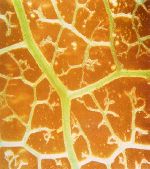
The Natural Step By Joanne Tippett of Holocene Design
 |
"The laws of Congress and the laws of physics have grown divergent, and the laws of physics are not likely to yield." Author Bill McKibben |
|
As a society, we must discover how to meet present human needs and improve quality of life without diminishing the Earth's capacity to provide for the needs of future generations. This challenge forms the essence of sustainability. Few people disagree that sustainability is a good idea, but most find it difficult to think through its complex implications. Where do you start and what questions should you ask? Many of the social and environmental problems we face will not be solved without a fundamental re-thinking of how we interact with the environment. However, much of the debate about sustainability is confusing and mired in detail. Karl-Henrik Robert, a cancer doctor in Sweden, started the process of dialogue from which The Natural Step emerged, aiming to improve the quality of debate by determining the core principles of sustainability. He began a lengthy process of consultation among leading scientists, asking the question - "What do scientists agree upon about the Earth?". Four system conditions of sustainability were derived from the principles agreed on in the consensus process. These system conditions offer a base line description of sustainability in bio-physical and social terms. The model focuses on the whole system of the Earth, and aims to provide a shared mental model about sustainabilty as a framework for decision making and communication. Other design methods and approaches to sustainability, such as Permaculture, can build on this foundation to determine how sustainable design will function and look in different situations. The Natural Step has been used in Sweden as a tool for education and strategic planning with over sixty corporations, including Electrolux, Ikea, OK Petroleum, and McDonald's Sweden, over fifty municipalities and with seventeen professional networks. In the USA, The Natural Step has been adopted as a strategic framework by companies as diverse as Bornt Family Farms, Nike and Collins Pine, and has been used in other sectors, such as in designing the new University of Texas-Houston Health Science Center. A brief discussion of the four science principles (the consensus reached by scientists) and the four system conditions follows: |
THE SCIENCE PRINCIPLES
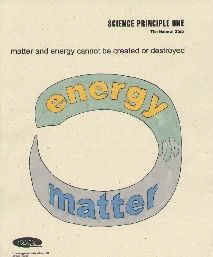 |
1. Matter and energy can neither be created nor destroyed (the law of conservation). |
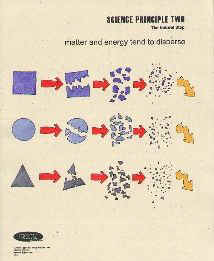 |
2.
Matter and energy tend to disperse spontaneously (second law of thermodynamics).
The Earth is a closed loop with regards to matter, but is open to a constant flow of energy. The matter on the Earth's surface may be rearranged, but the total of matter on the Earth is constant (exceptions being the conversion of matter to energy in nuclear reactions, falling to Earth and the loss of some matter to space in the form of rockets and space ships). There is a constant though-flow of energy from the sun. |
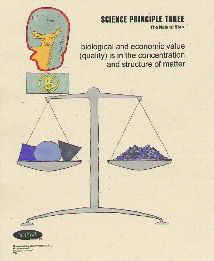 |
3.
Biological and economic value (quality) lies in the concentration and structure
of matter. This quality is the only thing we consume.
A tree has a defined structure and plenty of biological and economic value. Compare the tree to a pile of sawdust, which has a similar concentration, but less structure - and compare this to the smoke and heat produced by burning the sawdust. Once the process of burning has happened, there is very little value in the dispersed end products. |
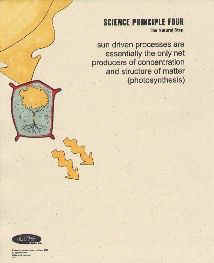 |
4.
Sun driven processes are essentially the only net producers of material
quality on earth (photosynthesis).
Net production implies taking the entire process into account, such as in life cycle analysis, which takes into account the source of materials and the sink (where both the products and by-products will eventually end up). Industrial processes create material structure in their products, but the process of production often causes a great amount of loss of structure and concentration of matter. For example a spoon has more structure and concentration than iron ore, but in the entire process of producing that spoon, a large amount of matter has been dispersed, in the mining process, the burning of fuel for smelting and manufacture, etc. |
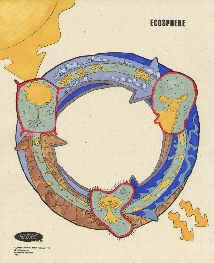 |
Over millions of years, living organisms have interacted with the earth's surface to create a greater degree of concentration of matter and structure, which provide ecosystem service flows, in the form of fresh water supplies, soil maintenance and building, an atmosphere rich in oxygen, climate regulation, and maintenance of complex ecosystems and biodiversity. |
SYSTEM CONDITIONS FOR SUSTAINABILITY (wording updated Feb. 29, 2000)
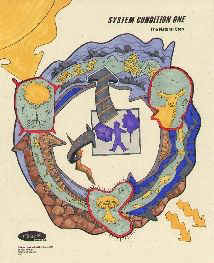 |
1.
In order for a society to be sustainable, nature's functions and diversity
are not systematically subject to increasing concentrations of substances
extracted from the Earth's crust.
(© TNS)
Fossil fuels, metals and other minerals must not be extracted at a faster rate than their re-deposit and reintegration into the earth's crust. We must learn how to utilize the sun's energy to meet most of our energy needs, and learn how to change a wasteful use of metals and minerals from the earth's crust into a cyclic use, where materials can be re-used indefinitely. In terms of design, this implies making sure that different materials can easily be separated (design for disassembly) and reused, maintaining their purity and material quality. |
 |
2.
In order for a society to be sustainable, nature's functions and diversity
are not systematically subject to increasing concentrations of substances
produced by society. (© TNS)
Human-made substances must not be produced faster than they can be broken down and re-integrated in the cycles of the biosphere or deposited in the Earth's crust. This refers both to the accumulation of persistent synthetic compounds and of materials which can be assimilated by the biosphere, but which are currently being produced at a rate exceeding this capacity of re-absorption. |
 |
3.
In order for a society to be sustainable, nature's functions and diversity
are not systematically impoverished by displacement,
over-harvesting, or other forms of ecosystem manipulation. (© TNS)
The productive surfaces of the biosphere must not be diminished in quality or quantity, and we must not harvest more from the biosphere than can be recreated and renewed. Sun driven processes are essentially the only net producers of concentration and structure in matter, and thus are the foundation of all economic value. The cycling of materials and the creation of structure in the biosphere can be seen as a quality cycle. Any societal activity that systematically reduces the physical basis for this cycle is inherently unsustainable. The role of diversity within this cycle is best expressed as a function of interrelationships, on which cycling of matter and the building of quality is dependent. |
 |
4.
Resources are used efficiently and fairly in order to meet basic
human needs globally.
(© TNS) This is the core of the design challenge of sustainability; designing ways to increase quality of life and economic vitality in an ecologically sustainable way. |
As a tool The Natural Step
reduces confusion, cutting through seemingly conflicting information in the
sustainability debate. It offers a framework for strategic planning, and can
be used as a compass for
navigating step-by-step towards long-term economic and ecological sustainability.
Information on a process for applying The Natural Step Principles in visioning and planning.
images
© 1998 Joanne Tippett and Buddy Williams
home